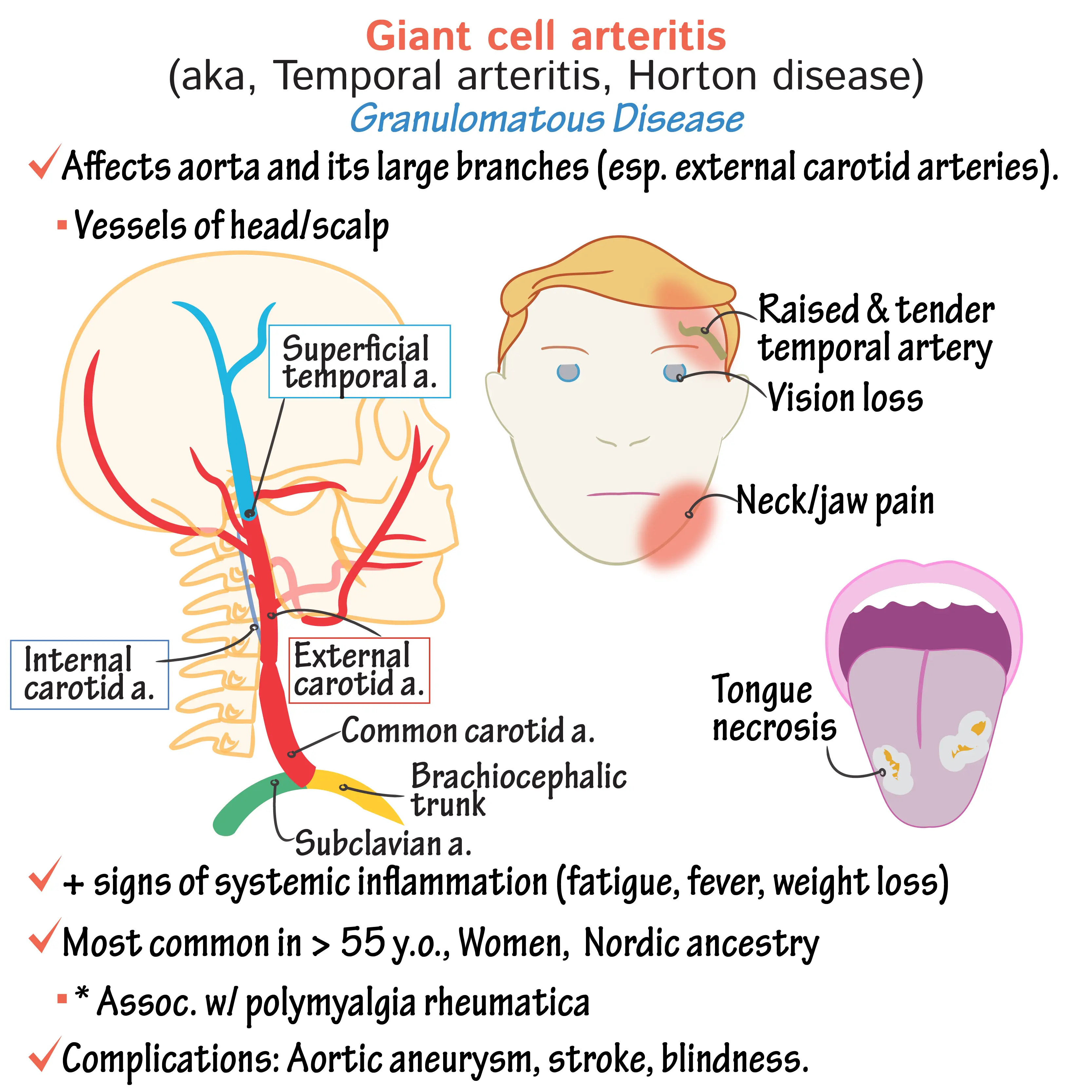Can Giant Cell Arteritis be Cured?
Sometimes
Treatment with corticosteroids is often effective in managing symptoms and preventing complications; outcomes vary, and long-term management may be necessary to control inflammation and maintain quality of life

What is Giant Cell Arteritis?
Giant cell arteritis is an inflammatory condition that affects the blood vessels, particularly those near the temples. It can lead to headaches, jaw pain, and vision problems. Treatment involves corticosteroids to reduce inflammation.

Clinical Aspects

Characteristics
Inflammation of the large and medium-sized arteries, often involving the temporal arteries

Symptoms
Headache, jaw pain, visual disturbances, fatigue

Diagnosis
Clinical evaluation, imaging, biopsy

Prognosis
Variable, depends on prompt treatment

Complications
Visual impairment, complications from vascular involvement
Etiology and Treatment

Causes
Exact cause unclear; likely involves immune system dysfunction

Treatments
Corticosteroids, other immunosuppressive medications

Prevention
Corticosteroids, other immunosuppressive medications
Public Health and Patient Perspectives

Epidemiology
More common in older adults

Patient Perspectives
Timely diagnosis and treatment are crucial
Remember, the information provided here is intended for general knowledge purposes and may not apply to every individual case. To ensure you have accurate information relevant to your specific situation, always consult with a healthcare professional.
Share: